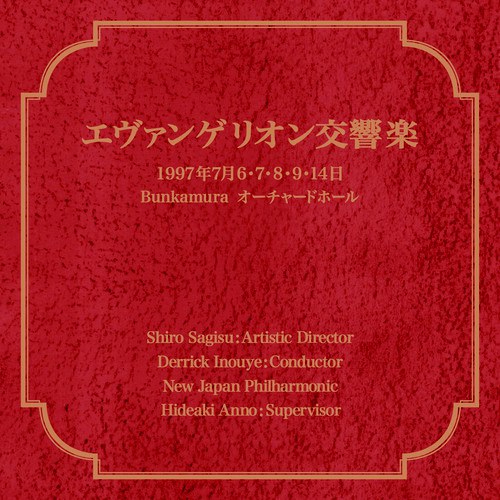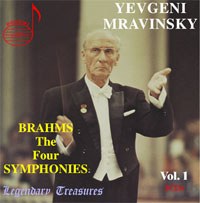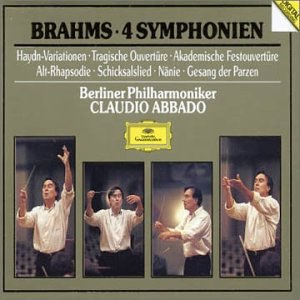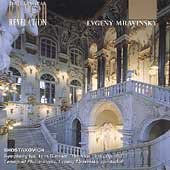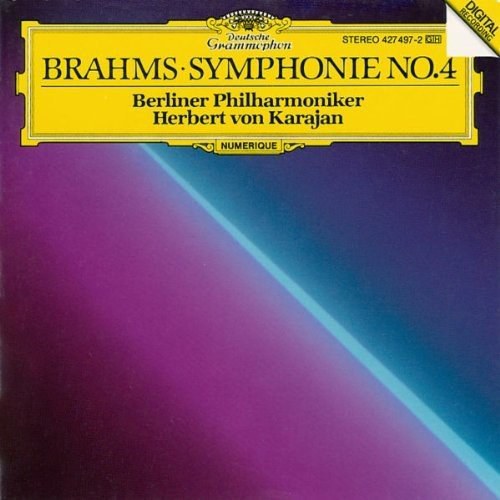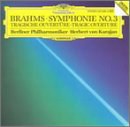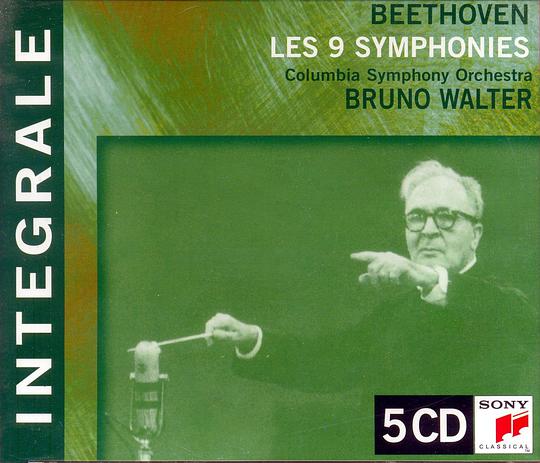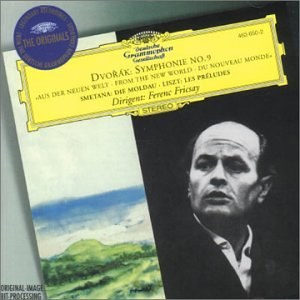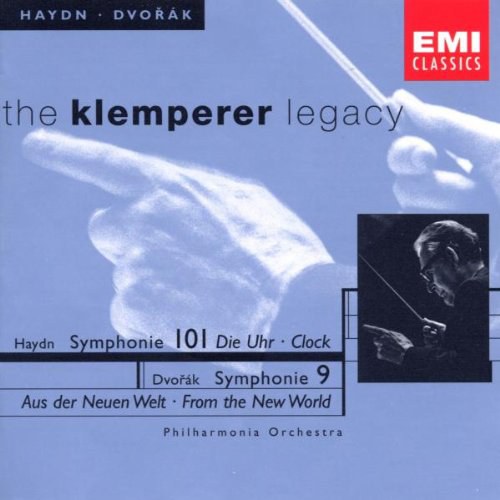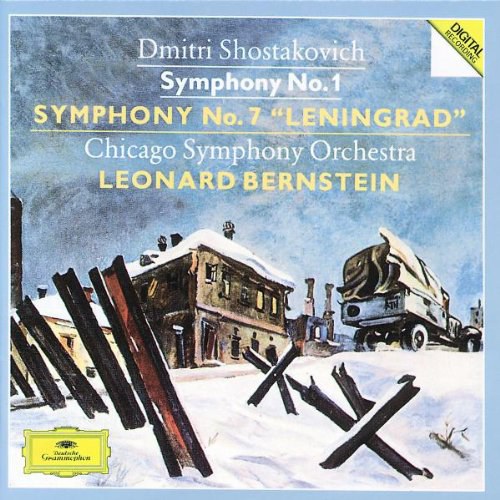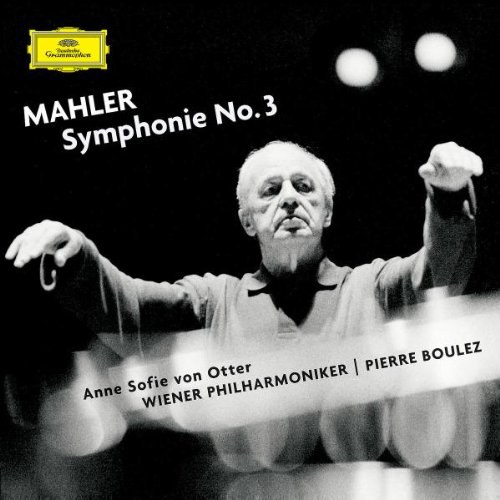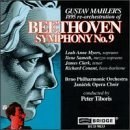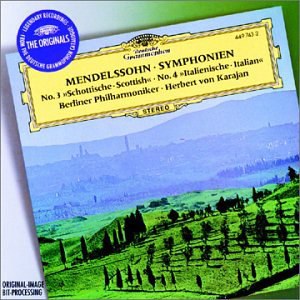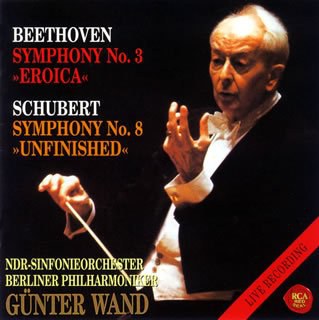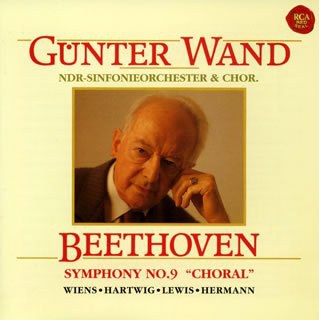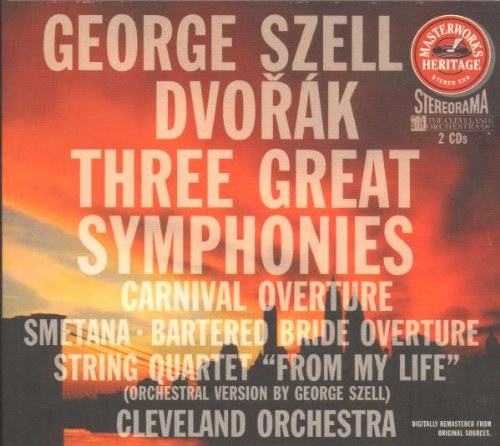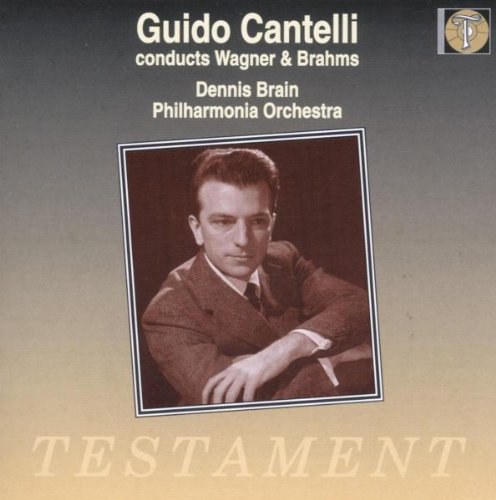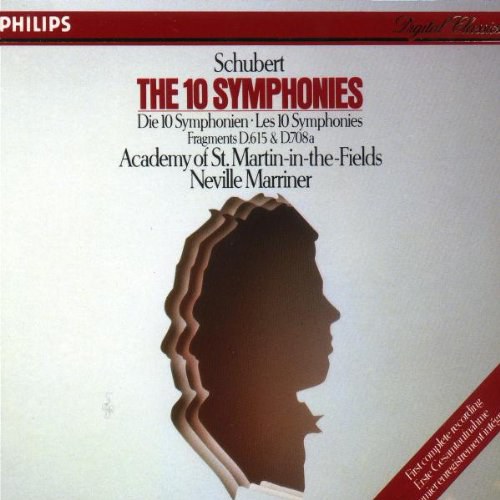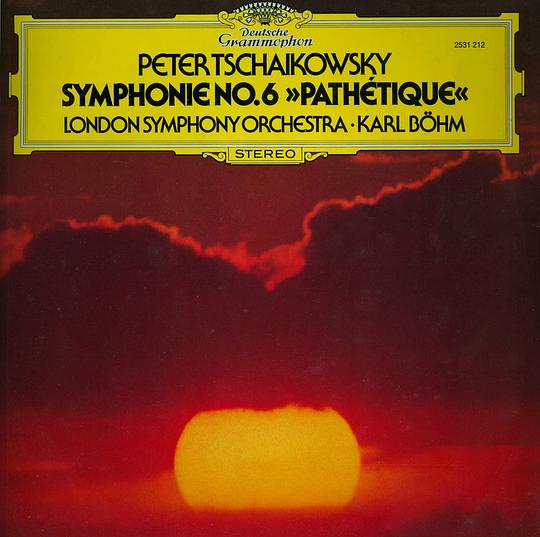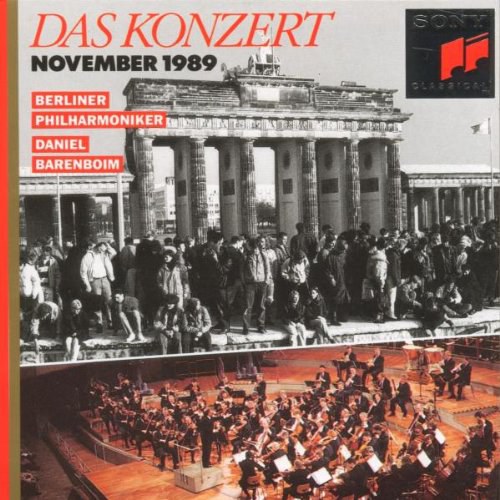交响曲
穆拉文斯基:勃拉姆斯交响曲全集 豆瓣
Eugen Mravinsky
/
Leningrad Philharmonic Orchestra
发布日期 2002年2月5日
出版发行:
Doremi Records
阿巴多:勃拉姆斯交响曲全集 豆瓣
8.4 (5 个评分)
Berliner Philharmoniker
/
Claudio Abbado
类型:
古典
发布日期 1992年3月3日
出版发行:
Deutsche Grammophon
意大利指挥家 Claudio Abbado 指挥柏林爱乐演奏勃拉姆斯交响曲及其它作品,上世纪八十年代数字录音,音质优秀,1992 年发行套装。早些时候 DG 曾发行过四张单独唱片。
肖斯塔科维奇第十一交响曲"1905" 豆瓣
德米特里·肖斯塔科维奇 Dmitri Shostakovich
/
穆拉文斯基 Евге́ний Мрави́нский(Mravinsky)
…
类型:
古典
发布日期 1998年4月21日
出版发行:
Brilliant
卡拉扬:最后一套勃拉姆斯交响曲全集第四交响曲 豆瓣
9.3 (6 个评分)
Herbert von Karajan
/
Berlin Philharmonic
发布日期 1989年9月8日
出版发行:
Deutsche Grammophon
卡拉扬:最后一套勃拉姆斯交响曲全集第三交响曲 豆瓣
Brahms Herbert Von Karajan Berliner Philharmoniker
发布日期 1990年3月30日
出版发行:
DEUTSCHE GRAMMOPHON
布鲁诺·瓦尔特:贝多芬交响曲全集 豆瓣
Bruno Walter
/
Columbia Symphony Orchestra
发布日期 2002年7月1日
出版发行:
Sony
弗里乔伊:德沃夏克第九交响曲/斯美塔那《沃尔塔瓦河》/李斯特《前奏曲》 豆瓣
9.4 (7 个评分)
费伦茨·弗里乔伊 Ferenc Fricsay
/
柏林爱乐乐团 Berliner Philharmoniker Orchester
发布日期 2001年7月2日
出版发行:
Deutsche Grammophon
详细内容: ANTONIN DVORAK(1841-1904)1-4.Symphonie No.9 e-moll op.95>>Aus der Neuen WeltBEDRICH SMETANA(1824-1884)5.Die Moldau [11'01]FRANZ LISZT(1811-1886)6.Les Préludes [16'43]广告语: 德沃夏克:e小调第九交响曲“自新大陆”;斯美塔纳:伏尔塔瓦河-旋子“我的祖国”;李斯特:前奏曲;弗利查指挥柏林广播交响乐团
克伦佩勒:德沃夏克第九交响曲/海顿第101交响曲 / 克莱姆佩勒:德沃夏克第九交响曲/海顿第101交响曲 豆瓣
Dvorak
/
Haydn
…
发布日期 1999年6月8日
出版发行:
Angel Records
伯恩斯坦:肖斯塔科维奇第一交响曲/第七交响曲 豆瓣
8.3 (6 个评分)
Chicago Symphony Orchestra
/
Leonard Bernstein
类型:
古典
发布日期 1989年9月8日
出版发行:
Deutsche Grammophon
详细内容: DMITRI SHOSTAKOVICH(1906-1975)COMPACT DISC 1 [66'43]Sypmphony no.1 op.101.Allegrotto-Allegro non troppo [8'54]2.Allegro-Meno mosso-Allegro-Meno mosso [4'46]3.Lento-Largo-[Lento](attacca:) [10'19]4.Allegro molto-Lento-Allegro molto-Meno mosso-Allegro molto-Molto menomosso-Adagio-Largo-Più mosso-Presto [10'37]Symphony no.7 op.60"Leningrad"5.Allegretto [31'43]COMPACT DISC 2 [53'10]1.Moderato(poco allegretto) [14'48]2.Adagio(attacca:) [19'25]3.Allegro non troppo [18'52]广告语: 肖斯塔科维奇:《第一、七“列宁格勒”交响曲》/伯恩斯坦指挥芝加哥交响乐团。“企鹅”评价三星
马勒配器版贝多芬第九交响曲 豆瓣
Tiboris
发布日期 1993年9月11日
出版发行:
Bridge
Mendelssohn: Symphonies Nos. 3 & 4 豆瓣
8.8 (8 个评分)
Herbert von Karajan
/
Berliner Philharmoniker
发布日期 1997年8月12日
出版发行:
Deutsche Grammophon
本唱片是门交第三/四的名盘,企鹅评价三星,为卡爷指挥亲兵BPO于1971年与1973年在柏林耶稣基督大教堂的录音。正处于巅峰期的卡大师与BPO为我们奉献了一次教科书般的演绎:BPO豪壮又不失柔情的音色充满画面感与生命的气息,如丝绒般绵密细致的弦乐与黄金般熠熠生辉的铜管乐无一将卡式美学发挥得淋漓尽致,令人听出耳油的同时又有叹而观止之感,实乃各位爱乐人士居家旅行休闲放松之必备唱片。
本唱片的补白曲为门德尔松的“赫布里底群岛”序曲,同样是一个经典的录音。卡大师棒下BPO无比细腻与理性的演绎令听者仿佛有带咸味的海风轻抚脸颊之感,除此之外还有圣咏般洒下的阳光与海鸥们快乐的歌声,世间的烦恼瞬间飞到九霄云外,留下的只有对自然力量的感恩。
本唱片的补白曲为门德尔松的“赫布里底群岛”序曲,同样是一个经典的录音。卡大师棒下BPO无比细腻与理性的演绎令听者仿佛有带咸味的海风轻抚脸颊之感,除此之外还有圣咏般洒下的阳光与海鸥们快乐的歌声,世间的烦恼瞬间飞到九霄云外,留下的只有对自然力量的感恩。
Gunter Wand:Beethoven Symphony No.3/Schubert Symphony No.8 豆瓣
Gunter Wand
/
NDR Sinfonieorchester
类型:
古典
发布日期 2007年11月7日
出版发行:
BMG JAPAN
《贝多芬"英雄"舒伯特"未完成"》《第三“英雄”交响曲》是一部伟大的作品,到处洋溢着战斗的气息和自由的理念,是贝多芬留给后人的最宝贵的精神财富。乐曲本来要呈献给拿破仑,却因拿破仑即位称帝,贝多芬便愤而改了原题为“献给拿破仑·波拿巴”的题词,重写了“为纪念一位伟大的人物而写的英雄交响曲”的扉页。
通常被人们称为“未完成交响曲”的《第八交响曲》,不仅是舒伯特交响曲中最杰出的作品,也是浪漫主义音乐的绝世佳作。独特的作曲手法是它成为世界上最受欢迎的交响曲之一的重要原因。
德奥传统指挥大师旺德领衔北德广播交响乐团和柏林爱乐乐团为这两部伟大作品做出了经典的诠释,他们的演奏沉稳流畅,使这张唱片成为当今最富德国厚重音色的唯一名演名版,也成为《日本唱片艺术》特选版本。
●贝多芬“为纪念一位伟大的人物而写的英雄交响曲”和舒伯特完美无缺的“未完成”交响曲
●当今最富德国厚重音色的唯一版本,绝对睥睨现有任何版本
音乐史上两部伟大交响曲 《日本唱片艺术》特选。北德广播交响乐团 柏林爱乐乐团/君特·旺德 指挥。
通常被人们称为“未完成交响曲”的《第八交响曲》,不仅是舒伯特交响曲中最杰出的作品,也是浪漫主义音乐的绝世佳作。独特的作曲手法是它成为世界上最受欢迎的交响曲之一的重要原因。
德奥传统指挥大师旺德领衔北德广播交响乐团和柏林爱乐乐团为这两部伟大作品做出了经典的诠释,他们的演奏沉稳流畅,使这张唱片成为当今最富德国厚重音色的唯一名演名版,也成为《日本唱片艺术》特选版本。
●贝多芬“为纪念一位伟大的人物而写的英雄交响曲”和舒伯特完美无缺的“未完成”交响曲
●当今最富德国厚重音色的唯一版本,绝对睥睨现有任何版本
音乐史上两部伟大交响曲 《日本唱片艺术》特选。北德广播交响乐团 柏林爱乐乐团/君特·旺德 指挥。
旺德:贝多芬第九交响曲 / Gunter Wand:Beethoven Symphony No.9 豆瓣
ヴァント(ギュンター)
/
ウィーンズ(イーディス)
…
类型:
古典
发布日期 2007年11月7日
出版发行:
BMG JAPAN
《贝多芬第九"合唱"交响曲》被认为是超越卡拉扬版本的经典演绎。德奥老牌指挥家君特?旺德是二十世纪第一位指挥时动用作曲者原手稿、以追求音乐原貌的指挥家,他于1985到1988年间指挥录制了贝多芬交响曲全集全套录音。
由于旺德忠于贝多芬原谱的指挥特性,再加上RCA以24Bit/96khz的先进技术转录,因此在众多贝多芬交响曲全集版本中,唯独旺德的这份录音获得最权威的英国《企鹅唱片指南》三星带花最高评鉴,而这份录音也成为旺德毕生七十年指挥艺术的终极代表作。
本唱片中伟大的第九交响曲便是选自这份贝多芬交响曲全集全套录音,令人惊喜的是,不同于卡拉扬版本的耀眼,不同于加德纳版本的锋利,旺德在本唱片中成功地演绎出了第九交响曲的“天然去雕饰”,因此被认可为超越卡拉扬版本的经典演绎。
●君特·旺德领衔德奥经典老牌乐团北德广播交响乐团及其合唱团、汉堡国家歌剧院合唱团及著名歌唱家文斯、哈特维西、莱维斯、赫尔曼热情演绎
●24Bit-96khz顶级录音品质
●古典乐迷必备发烧名盘
《企鹅唱片指南》三星带花最高评鉴 《日本唱片艺术》推荐。北德广播交响乐团/君特·旺德 指挥。
由于旺德忠于贝多芬原谱的指挥特性,再加上RCA以24Bit/96khz的先进技术转录,因此在众多贝多芬交响曲全集版本中,唯独旺德的这份录音获得最权威的英国《企鹅唱片指南》三星带花最高评鉴,而这份录音也成为旺德毕生七十年指挥艺术的终极代表作。
本唱片中伟大的第九交响曲便是选自这份贝多芬交响曲全集全套录音,令人惊喜的是,不同于卡拉扬版本的耀眼,不同于加德纳版本的锋利,旺德在本唱片中成功地演绎出了第九交响曲的“天然去雕饰”,因此被认可为超越卡拉扬版本的经典演绎。
●君特·旺德领衔德奥经典老牌乐团北德广播交响乐团及其合唱团、汉堡国家歌剧院合唱团及著名歌唱家文斯、哈特维西、莱维斯、赫尔曼热情演绎
●24Bit-96khz顶级录音品质
●古典乐迷必备发烧名盘
《企鹅唱片指南》三星带花最高评鉴 《日本唱片艺术》推荐。北德广播交响乐团/君特·旺德 指挥。
乔治·塞尔:德沃夏克第七/第八/第九交响曲 豆瓣
发布日期 1998年6月16日
出版发行:
Sony
圭多·坎泰利指挥瓦格纳和勃拉姆斯 豆瓣
Guido Cantelli
发布日期 1995年2月15日
出版发行:
Testament
马里纳:舒伯特交响曲全集 豆瓣
Neville Marriner
/
Academy of Saint Martin in the Fields
…
发布日期 1984年12月3日
出版发行:
Philips (Universal)
Tchaikovsky Symphony No.6“Pathètigue” 豆瓣
Karl Böhm
/
London Symphony Orchestra
类型:
古典
发布日期 1979年11月18日
出版发行:
DG
Each of Tchaikovsky's last three symphonies concerns the conflict of a courageous but deeply vulnerable personality with a mysterious Fate. In the Fourth, the symphony eventually turns away from the battering Fate theme to a Tolstoy-like absorption into peasant innocence; in the Fifth, the Fate theme is, somewhat over-insistently, forced into triumph.
Tchaikovsky's first thoughts for a Sixth Symphony were that it should be about Life; and in the autumn of 1892 he sketched four movements of a work in E flat before abandoning it. In February 1893 he took up another scheme, and within days had outlined some of the music, as he told his nephew Bob Davydov:
"At the time of my journey (to Odessa) I had an idea for another symphony, this time with a programme, but a programme of a kind that will remain an enigma to all - let them guess, but the symphony will just be called Programme Symphony (No.6). This programme is permeated with subjective feeling, and quite often on my journey, composing it in my mind, I wept copiously ... Formally there will be much that is new in this symphony, and incidentally the Finale won't be a loud Allegro, but, on the contrary, a very slow-moving Adagio." By the the middle of August the orchestration was finished. The first performance was given in St. Petersburg on 16 October (old style), with Tchaikovsky himself conducting. It was somewhat coolly received. A few days later, he alarmed friends by seizing a glass of unboiled water in a restaurant and drinking it: there was cholera in the city. Within days, he was seriously ill; and on the morning of 25 October, with some of his family and friends gathered by his bed, he died.
The symphony is thus Tchaikovsky's last engagement with the idea of a sensitive soul tormented, and here finally defeated, by Fate - and there can be little doubt that he was describing the misery which his homosexuality had brought into his life. That this could only be resolved by death, in other words that there was no answer, is suggested by the use of the slow final Adagio which, in sketches for the projected "Life" symphony, was to signify death. Even in the first movement, the idea is never far off; for though this is a sonata form movement (after a slow introduction), with an energetic first subject and a passionate second subject recalling Tchaikovsky's beloved Carmen, the dramatic climax of the movement produces some of the most violent music he ever wrote and, built into it, a quotation from the Orthodox Requiem. The waltz movement which follows is no longer, as so often with Tchaikovsky, escape or diversion but a limping, maimed waltz, with a beat missing from it's rhythm. Similarly the march movement which follows has, for all it's superficial energy, a barrenness at it's heart (the intervals of the tune are bleak fourths), and a quality which can come to seem close to panic.
It is after all that has gone before that the agonized phrases of the finale make their most profound effect. In structure and expression, they embody a helpless decline into nullity, and a grief and silence which all the energy and passion cannot stem. It is a true finale to a symphony which, whatever the detail of its secret programme, describes a sensitive, vital and doomed personality. Pondering a title for it on the morning after the première, Tchaikovsky was offered "Pathetic" by his brother. So it has remained. The associations of weakness in the English word have been misleading; for this is not a work of pathos, but Tchaikovsky's Symphony of Suffering.
John Warrack
Tchaikovsky's first thoughts for a Sixth Symphony were that it should be about Life; and in the autumn of 1892 he sketched four movements of a work in E flat before abandoning it. In February 1893 he took up another scheme, and within days had outlined some of the music, as he told his nephew Bob Davydov:
"At the time of my journey (to Odessa) I had an idea for another symphony, this time with a programme, but a programme of a kind that will remain an enigma to all - let them guess, but the symphony will just be called Programme Symphony (No.6). This programme is permeated with subjective feeling, and quite often on my journey, composing it in my mind, I wept copiously ... Formally there will be much that is new in this symphony, and incidentally the Finale won't be a loud Allegro, but, on the contrary, a very slow-moving Adagio." By the the middle of August the orchestration was finished. The first performance was given in St. Petersburg on 16 October (old style), with Tchaikovsky himself conducting. It was somewhat coolly received. A few days later, he alarmed friends by seizing a glass of unboiled water in a restaurant and drinking it: there was cholera in the city. Within days, he was seriously ill; and on the morning of 25 October, with some of his family and friends gathered by his bed, he died.
The symphony is thus Tchaikovsky's last engagement with the idea of a sensitive soul tormented, and here finally defeated, by Fate - and there can be little doubt that he was describing the misery which his homosexuality had brought into his life. That this could only be resolved by death, in other words that there was no answer, is suggested by the use of the slow final Adagio which, in sketches for the projected "Life" symphony, was to signify death. Even in the first movement, the idea is never far off; for though this is a sonata form movement (after a slow introduction), with an energetic first subject and a passionate second subject recalling Tchaikovsky's beloved Carmen, the dramatic climax of the movement produces some of the most violent music he ever wrote and, built into it, a quotation from the Orthodox Requiem. The waltz movement which follows is no longer, as so often with Tchaikovsky, escape or diversion but a limping, maimed waltz, with a beat missing from it's rhythm. Similarly the march movement which follows has, for all it's superficial energy, a barrenness at it's heart (the intervals of the tune are bleak fourths), and a quality which can come to seem close to panic.
It is after all that has gone before that the agonized phrases of the finale make their most profound effect. In structure and expression, they embody a helpless decline into nullity, and a grief and silence which all the energy and passion cannot stem. It is a true finale to a symphony which, whatever the detail of its secret programme, describes a sensitive, vital and doomed personality. Pondering a title for it on the morning after the première, Tchaikovsky was offered "Pathetic" by his brother. So it has remained. The associations of weakness in the English word have been misleading; for this is not a work of pathos, but Tchaikovsky's Symphony of Suffering.
John Warrack
巴伦博伊姆:庆祝柏林墙倒塌音乐会 豆瓣
Daniel Barenboim
/
Berliner Philharmoniker Orchestra
出版发行:
1989
